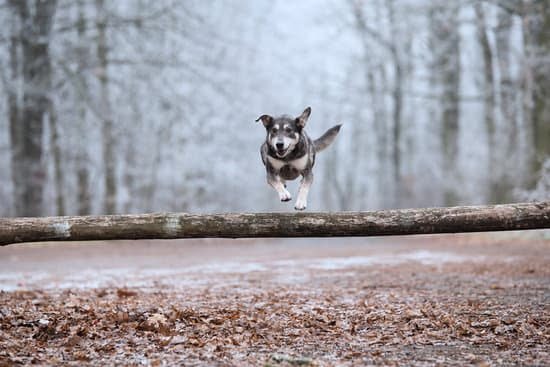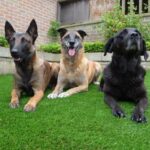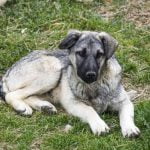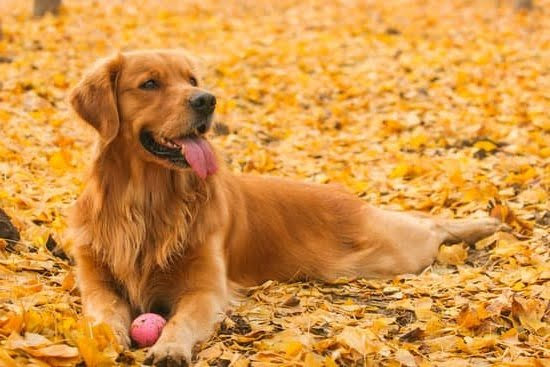Are you wondering how to train a dog for quail hunting? Quail hunting is an exhilarating activity that requires a well-trained and obedient hunting dog.
The process of training a dog for this purpose involves a series of steps and techniques to ensure the best possible hunting experience. In this article, we will take a comprehensive look at the various aspects of training a dog for quail hunting, including selecting the right breed, basic training commands, scent training, advanced techniques, gun conditioning, field training, troubleshooting common issues, and the role of the handler.
When it comes to quail hunting, having a well-trained dog is crucial for a successful hunt. A trained dog not only helps locate and flush out quails but also retrieve them after they have been shot. Understanding the basics of quail hunting and the important role a dog plays in this activity is essential before embarking on the training journey.
Selecting the right breed for quail hunting is the first step in the training process. Certain breeds are better suited for this type of hunting due to their natural instincts and characteristics. It’s important to choose a dog with the right temperament, intelligence, and willingness to learn in order to have a successful hunting companion.
Basic training commands play an integral role in preparing a dog for quail hunting. Commands such as sit, stay, heel, and come are vital for ensuring that your dog remains obedient and focused during the hunt. Obedience training is fundamental in creating a strong foundation for more advanced techniques down the line.
Selecting the Right Breed for Quail Hunting
When it comes to quail hunting, selecting the right breed of dog is crucial for a successful and enjoyable experience. Different breeds possess various characteristics, instincts, and abilities that make them suitable for this type of hunting activity. The ideal breeds for quail hunting are those known for their intelligence, agility, endurance, and excellent sense of smell. In selecting the right breed for quail hunting, it’s essential to consider these specific traits.
Ideal Characteristics and Breeds
The perfect breed for quail hunting should have a strong prey drive, be highly trainable, possess good stamina, and excel in working closely with their handler. Breeds such as English Pointers, German Shorthaired Pointers, Brittany Spaniels, and English Setters are popular choices for quail hunting due to their natural pointing instincts and ability to cover ground efficiently. These breeds are known for their keen sense of smell and versatility in adapting to different terrains.
The Importance of Temperament and Instincts
Aside from physical attributes, considering a dog’s temperament and natural instincts is equally important. Dogs bred specifically for hunting tend to have a more pronounced prey drive and an innate ability to locate game birds like quail. It’s crucial to choose a breed that demonstrates unwavering focus on the task at hand while being cooperative with their handler. A well-rounded temperament combined with strong hunting instincts will greatly contribute to a dog’s effectiveness in quail hunting.
Choosing the Right Fit
Ultimately, the decision on which breed to select for quail hunting is influenced by various factors such as the hunter’s preferences, level of experience in handling a particular breed, and the type of terrain where the hunting will take place. Before making a decision, it’s beneficial to research different breeds extensively, consult with experienced hunters or trainers, and even consider participating in field tests or trials to see how specific breeds perform in actual hunting scenarios.
Selecting the right breed involves careful consideration of both physical attributes and behavioral traits that align with the requirements of quail hunting.
Basic Training Commands for Quail Hunting
When training a dog for quail hunting, it is essential to start with the foundational basic commands that will be crucial in the field. Teaching commands such as sit, stay, heel, and come are fundamental building blocks for a successful hunting experience. Obedience training is especially important in quail hunting as it ensures that the dog remains under control and attentive to the hunter’s instructions.
Importance of Obedience Training
Obedience training lays the groundwork for effective communication between the hunter and the dog during a quail hunt. The ability to command the dog to sit or stay when necessary can be critical in preserving the stealth required when approaching a covey of quail. Moreover, teaching the dog to heel and come on command helps to maintain close proximity and ensure easy retrieval of downed birds.
Consistency and Patience
During basic training commands for quail hunting, consistency and patience are key factors in achieving success. It is important for handlers to be patient with their dogs and consistently reinforce these commands through repetition and positive reinforcement. Consistency in training builds reliability in a dog’s responses and behavior, leading to a more effective hunting partnership.
Introduction to Quail Scent Training
Quail hunting is a popular and rewarding outdoor activity for many hunting enthusiasts. One essential aspect of preparing a dog for quail hunting is introducing them to quail scent training. By teaching a dog to recognize and track the scent of quails, hunters can significantly enhance their hunting experience. Here are some key points to consider when introducing quail scent training to your dog:
– **Understanding the importance of scent training:** Scent training is crucial in quail hunting as it enables a dog to locate and point out the position of quails, making the hunt more efficient and successful. Dogs with a well-developed sense of smell have a significant advantage in this type of hunting.
– **Step-by-step instructions for introducing scent:** The first step in quail scent training is familiarizing the dog with the unique scent of quails. This can be achieved by using scented items or bird wings for the dog to investigate and become familiar with. Gradually, the dog should be introduced to live birds in controlled environments.
– **Reinforcing the association between scent and reward:** As the dog begins to show an understanding of quail scent, positive reinforcement through treats or praise should be used to strengthen this association. Encouraging the behavior of tracking and pointing at the source of the scent will help solidify this skill in the dog.
By laying a strong foundation in quail scent training, hunters can ensure that their dogs are prepared for successful quail hunts. It is important to note that patience, consistency, and positive reinforcement are key elements in effectively introducing a dog to this critical aspect of quail hunting preparation.
Advanced Training Techniques for Quail Hunting
Once your dog has mastered the basic commands and obedience training, it’s time to move on to more advanced techniques for quail hunting. One essential skill to teach your dog is quartering, which involves covering a wider area in a zigzag pattern to flush out quails.
You can start by using flags as markers to guide your dog while it learns this technique. Another crucial skill is retrieving, where your dog should be trained to find and bring back downed quails without damaging them.
It’s also important to work on improving your dog’s hunting stamina. This can be achieved through regular exercise and conditioning, gradually increasing the duration of training sessions in the field. Additionally, introducing your dog to different terrains and obstacles will help prepare them for real hunting conditions. This could include training in areas with tall grass, bushes, and other natural elements where quails are likely to hide.
Creating realistic hunting scenarios during training is essential for preparing your dog for actual hunts. This can involve hiding scented decoys or placing live quails in designated areas for your dog to locate and flush out. By simulating real-life hunting situations during training, you can help build your dog’s confidence and reinforce its skills for a successful quail hunt.
| Training Technique | Details |
|---|---|
| Quartering | Covering a wider area in a zigzag pattern |
| Retrieving | Finding and bringing back downed quails without damaging them |
| Hunting Stamina | Regular exercise and conditioning, training in different terrains with natural obstacles |
Gun Conditioning and Desensitization
When training a dog for quail hunting, it is crucial to get them comfortable with the sound of gunfire. Gun conditioning and desensitization are important aspects of preparing a hunting dog for the actual hunt. Here are some steps to help in the process:
– **Start Slowly:** Begin by exposing your dog to the sound of gunfire from a distance. This can be done by having someone else fire a gun while you are with your dog, slowly getting them accustomed to the noise.
– **Utilize Positive Reinforcement:** Associate the sound of gunfire with positive experiences for your dog. This can be done by providing treats or rewards whenever the gun is fired, creating a positive association with the sound.
– **Gradually Increase Exposure:** Over time, gradually decrease the distance between your dog and the source of gunfire. This gradual exposure will help desensitize them to the loud noise.
In addition to these steps, it is important to monitor your dog’s comfort level throughout the process. It is essential not to rush this training and ensure that your dog remains calm and relaxed during each stage of gun conditioning.
Ultimately, successful gun conditioning and desensitization will result in a hunting dog that remains steady and focused during quail hunting scenarios where gunfire is involved.
Field Training for Quail Hunting
Training a dog for quail hunting involves more than just teaching basic commands and scent recognition. Once the foundational training has been established, it is crucial to transition to field training in order to prepare the dog for real hunting scenarios. Field training allows the dog to experience the sights, sounds, and smells of an actual quail hunt, helping them develop the skills and instincts needed for success in the field.
One key aspect of field training is simulating quail hunting scenarios as closely as possible. This can include setting up mock hunts in outdoor environments that mimic actual hunting grounds. It’s important to expose the dog to different terrains, cover types, and weather conditions that they may encounter during a real hunt. Field training also helps build the dog’s physical stamina and endurance, allowing them to navigate through rough terrain and varying landscapes with ease.
Another crucial part of field training is introducing distractions and unexpected elements that the dog may encounter while hunting. This can include other wildlife, sudden noises, or changes in terrain. By exposing the dog to these distractions during training, they learn how to maintain focus on their task despite external stimuli. Field training also provides an opportunity for handlers to refine their communication and teamwork with their dogs in a real-world environment.
| Field Training Considerations | Importance |
|---|---|
| Simulating Quail Hunting Scenarios | Prepares dogs for various hunting conditions |
| Introducing Distractions | Teaches dogs how to stay focused during unexpected situations |
| Building Teamwork | Allows handlers and dogs to work effectively in real-world environments |
Troubleshooting Common Training Issues
Training a dog for quail hunting can be an extremely rewarding but challenging endeavor. Despite the best efforts of handlers, there are often common challenges and issues that can arise during the training process. It is important to address these problems effectively in order to ensure that the dog is fully prepared for a successful quail hunting experience.
One common issue encountered in training dogs for quail hunting is a lack of focus and attention. Some dogs may become easily distracted or lose interest in the training exercises, making it difficult to progress with their training. To address this, handlers should incorporate engaging and stimulating activities into the training routine, while also using positive reinforcement techniques to keep the dog motivated.
Another potential issue that may arise is a dog’s reluctance or fear of gunshots. This is a crucial problem to address, as a hunting dog must be comfortable around the sound of gunfire in order to perform effectively in the field. Desensitization techniques can be used to gradually introduce the dog to the sound of gunfire in a controlled and safe environment, helping them become accustomed to this essential aspect of quail hunting.
Additionally, some dogs may struggle with obedience and following commands consistently. This can hinder their performance during actual hunts and create safety risks for both the handler and the dog. In such cases, it is important for handlers to revisit basic obedience training and reinforce fundamental commands such as sit, stay, heel, and come. Consistent practice and patience will be key in overcoming these issues and ensuring that the dog is well-prepared for quail hunting.
The Role of the Handler in Quail Hunting
Training a dog for quail hunting is not only about teaching the animal to perform certain commands and tasks, but it also involves the role of the handler in shaping the behavior and skills of the dog. The handler plays a crucial part in the success of quail hunting, as their ability to communicate effectively with the dog can significantly impact the training process and eventual hunting experience.
The relationship between the handler and the dog is essential, as it sets the tone for how well the animal will perform in a real hunting scenario.
One important aspect of the handler’s role in quail hunting is establishing a strong bond with the dog. Building trust and rapport with the animal is key to creating a cooperative and responsive partner in hunting.
Spending quality time with the dog, engaging in play, exercise, and basic obedience training outside of hunting-related activities can strengthen this bond. Additionally, proper socialization with other animals and people can help ensure that the dog remains calm and focused during hunting trips.
The handler also serves as a leader for the dog, providing clear direction and guidance throughout training and actual hunts. Consistency in commands, expectations, and rewards are vital in reinforcing desired behaviors. In addition to giving verbal cues, body language plays a significant role in communicating with the dog during hunts.
Being aware of one’s own movements and gestures can prevent confusion or misinterpretation by the dog, leading to better coordination during tracking and retrieval of quails. Ultimately, effective communication and leadership from the handler fosters a harmonious working relationship between themself and their hunting companion.
Conclusion
In conclusion, training a dog for quail hunting requires dedication, patience, and a deep understanding of both the hunting process and the specific needs of the chosen breed. By following the guidelines outlined in this article, prospective hunters can set themselves and their canine companions up for success in the field. From selecting the right breed with the appropriate instincts to introducing basic and advanced training techniques, every step plays a crucial role in preparing a dog for quail hunting.
It’s important to remember that successful training doesn’t happen overnight. Consistency and positive reinforcement are key when teaching a dog the necessary commands and skills for quail hunting. This process not only creates a strong bond between handler and dog but also ensures that both are ready to work together effectively when faced with actual hunting scenarios.
Above all, patience is paramount. Training a dog for any purpose takes time, effort, and understanding. There will be challenges along the way, but by maintaining consistency and perseverance, both hunters and their dogs can look forward to an enjoyable and rewarding quail hunting experience in the future.
Frequently Asked Questions
What Is the Best Dog for Hunting Quail?
The best dog for hunting quail is typically a breed specifically bred for bird hunting, such as pointers, setters, or spaniels. These dogs have a natural instinct to locate and flush out birds like quail, making them well-suited for this type of hunting.
How Do You Introduce a Dog to a Quail?
Introducing a dog to quail should be done gradually and in a controlled environment. Start by allowing the dog to become familiar with the scent of quail by letting it sniff around an area where quail are present. Then, gradually introduce the sight and sound of live quails in a controlled setting before moving on to actual hunting situations.
Are Quail Good for Dog Training?
Quail can be excellent for dog training due to their small size, fast flying abilities, and tendency to hold tight in cover. Using live or freshly shot quail can help teach a hunting dog how to track, point, and retrieve game birds effectively.
This type of training with quail can help develop valuable skills for both the dog and the hunter.

Welcome to the blog! I am a professional dog trainer and have been working with dogs for many years. In this blog, I will be discussing various topics related to dog training, including tips, tricks, and advice. I hope you find this information helpful and informative. Thanks for reading!





